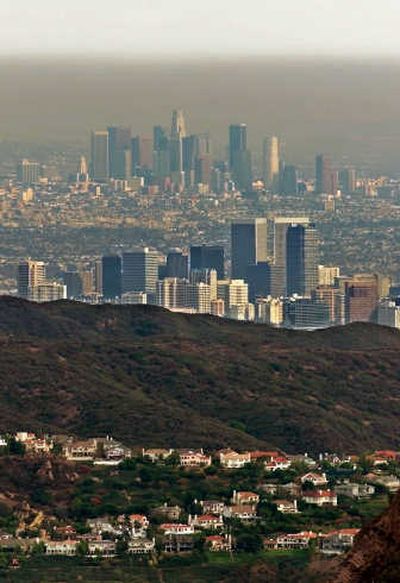Tighter ozone levels advised

Many areas of the United States that meet existing smog standards could be declared out of compliance under proposed new ozone levels announced Thursday by the Environmental Protection Agency.
Under court order to update ozone standards for the first time in a decade, EPA Administrator Stephen Johnson proposed tightening them slightly in response to mounting evidence of health risks. If they are finalized, the standards could require hundreds of counties and municipalities, including major cities in the Northeast and Texas and inland areas of Northern California, to adopt new smog controls.
“Based on current science, our current health standard is insufficient to protect public health,” said Johnson. “Based upon the outstanding input I received from our clean air science advisory committee, and our world-class environmental staff, I concluded that there was no scientific justification for retaining the current standard.”
Still, his proposal falls short of what was unanimously recommended by the science advisory committee as well as his own staff. Medical groups, environmentalists and some members of Congress criticized Johnson and his senior policy advisers for not acting more aggressively.
“In issuing the standard today, EPA is ignoring the advice of their own staff, the advice of EPA advisory committees, the opinion of the medical and scientific community,” said Dr. David Ingbar, president of the American Thoracic Society. “More importantly, EPA is ignoring all the kids who will be spending part of their summer in the hospital emergency room from asthma attacks caused by ozone pollution.”
“Smog kills, and EPA should be doing everything it can to save lives and protect the health of our children and families,” said Democratic Sen. Barbara Boxer, of California, who chairs the environment and public works committee. “Instead of listening to science, the administrator seems to be intent on listening to the wish lists of polluting industries. The final ozone rule must protect clean air and public health, period.”
Ozone is formed when nitrogen oxides, volatile organic compounds and other chemicals emitted from smokestacks and tailpipes swirl in hot summer sunlight, forming choking brown smog.
Johnson replied to critics that “the law does not require me to pick the lowest level. It requires me to do what is requisite to protect public health and the environment … and as our proposal points out, the task before us is to neither over- nor under-regulate.”
Johnson also said he will consider arguments for maintaining the current standards, which pleased industry groups who say his proposed regulations could cost billions. Johnson has until next March to make his final decision, which he noted under the Clean Air Act must be based on health risks alone, not the costs of cleaning up pollution.